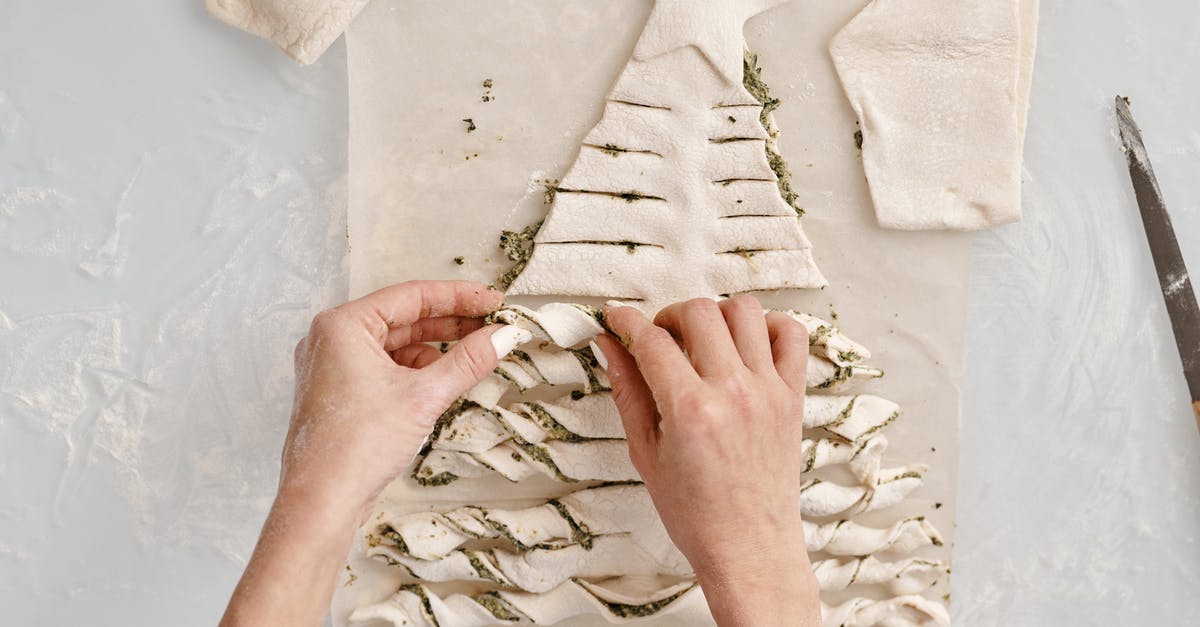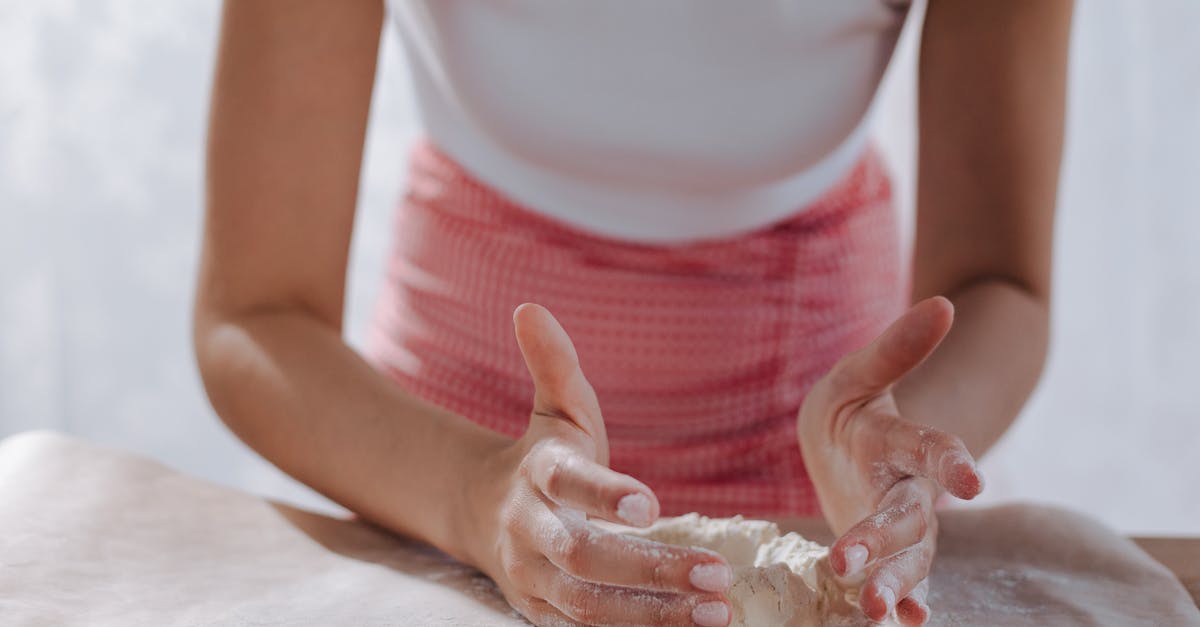Does shaping dough require punching/folding it?

Newbie baker here with a pizza dough recipe that says this:
Mix and ... allow to rise at room temperature for 8 to 12 hours.
Turn dough out onto lightly floured surface and divide into four even balls. Place each in a covered quart-sized deli container or in a zipper-lock freezer bag. Place in refrigerator and allow to rise at least 2 more days, and up to 4. Remove from refrigerator, shape into balls, and allow to rest at room temperature for at least 2 hours before baking.
I understand that you can either punch or fold dough before shaping it and both have different benefits. This recipe doesn’t mention this step, though. Is it just supposed to be understood that I’ll have to punch it before shaping or do they intend that I somehow divide and shape it without knocking the dough down. Also, would I punch the dough down twice? Once when dividing and again right before shaping?
Best Answer
I understand that you can either punch or fold dough before shaping it and both have different benefits.
Just understand what you're doing. During the fermentation process (rising), yeast consumes sugar and starch in the dough and turns it into alcohol, carbon dioxide, etc. That carbon dioxide collects gets trapped in the dough (thanks largely to the gluten), and bubbles form. Those bubbles (along with good flavor) are a big reason we ferment dough in the first place, so you want to keep most of them, but you also don't want large bubbles that'll create big empty lumps in your pizza.
"Punching down" the dough and folding it accomplish the same things: the idea is to release the gas from the large bubbles, and also to shift the yeast cells around a bit after they've used up all the food that's available in their immediate vicinities. You don't really have to punch the dough with force like you're angry at it, although some people (especially on TV) like to make a show of doing so. You can just press your hand down into the risen dough so that some of the gas gets pressed out. Removing the dough from its bowl and folding/kneading it a little bit does the same thing, and probably also helps develop the gluten a bit.
This recipe doesn’t mention this step, though. Is it just supposed to be understood that I’ll have to punch it before shaping or do they intend that I somehow divide and shape it without knocking the dough down.
Yes, dividing the dough and forming balls will do exactly the same thing as punching it down, perhaps a bit more gently. Forming balls will also give you a nice round shape that'll turn into a disc as the dough relaxes, and that disc will be easy to form into a nicely shaped pizza.
Given the long fermentation time, I'll bet the recipe you're using calls for a relatively small amount of yeast. Between that and retarding the fermentation in the refrigerator, it may be that you won't get the kind of large bubbles of CO2 that you'd get with more yeast and shorter rise time, and without large bubbles there's no need to punch down the dough.
Also, would I punch the dough down twice? Once when dividing and again right before shaping?
No, there's no need for that. Shaping the pizza will break any large bubbles. Sometimes large bubbles will start to form as you're shaping the pizza, or even after you've put it in the oven, and it's fine to pop those with the tip of a knife if you want to.
Pictures about "Does shaping dough require punching/folding it?"



Is it necessary to punch down dough?
After the first rise, it's important to punch down the dough to prevent it from over-proofing. Overproofed bread is dense and unable to retain the gas bubbles necessary for the structure of the bread loaf. Let the dough rise to double its original size before punching it down.Why do punch the dough down before shaping?
Punching down is a common technique used in bread baking and it is essential to almost every yeast bread you bake. Punching down deflates the dough and releases the air so that you can knead it and form it into loaves or other shapes.What is the purpose of punching down the dough?
If bread is allowed to rise to more than double its size, the gluten will stretch to the point of collapse and will no longer be able to hold the gas bubbles that provide necessary structure for the loaf. Overproofed dough is usually very dense. Punching down deflates the dough and controls its rate of proofing.Do you need to fold bread dough?
Folding helps add strength to bread dough through a very simple series of actions: stretch the dough out and over itself. This act of stretching and folding, which takes just a few moments, helps develop the gluten network in the dough. Each fold has a significant impact on dough strength.Why Do You Have to Punch Down Bread Dough? Degassing Explained
More answers regarding does shaping dough require punching/folding it?
Answer 2
It's pizza dough, the shaping comes at the end, this is just dividing nothing complex is required. A bit of punching is good to get rid of any large air bubbles to make sure you divide it evenly. Remember you will be nocking a load of air out when you make the base, so it's not important to preserve lift in pizza dough in proofing.
Answer 3
For Neapolitan pizza, once my dough is shaped into pizza-sized balls, it rests anywhere from 30 minutes to a couple of hours. At this point I do not punch or fold! I am gentle with each ball, forming it into a disk with a combination of turns on the countertop, and gently stretching with fists under the dough. Most importantly, I find, is that I try not to de-gas the outer ring; that is, what will become the crust. I never roll flat, with a pin for example! I find this gentleness, especially with the outer ring, helps with oven spring for the crust, which is what I like.
Answer 4
Expectations for "shaping" can vary a lot in a recipe. Years ago, I tended toward a minimalistic shaping routine, degassing as little as necessary just to get rid of large bubbles and form the dough into the rough shape I wanted. (This was, for example, the gentle shaping promoted by Peter Reinhart, based on the idea that gentle shaping would lose less gas and thus bring lift to the final dough.)
Then I read Jeffrey Hamelman's book, which devotes an entire lengthy chapter to various shaping techniques. I followed his detailed diagrams and instructions for shaping various loaves, and I discovered more aggressive shaping usually resulted in a higher rising dough, even if I was degassing more. I was both strengthening the gluten significantly and redistributing the yeast better.
I see little benefit for degassing ("punching down") for the sake of degassing. You don't need to deliberately try to squeeze air out of the dough, and being too aggressive about it can be counterproductive.
However, I would suggest more purposeful shaping for a better final product. Many people see shaping as "roll the dough into a rough ball, and then you're done." But that's not what most professional bakers think of as "shaping," which is an involved process that can require several stages. Shaping is more important with free-from bread loaves, but it can also have a significant impact on your pizza dough in terms of how it stretches, how it rises, etc.
Personally, after retarding in the fridge, I shape pizza balls pretty aggressively through repeatedly folding dough in on itself in my hands to stretch the exterior. For best results, I'd also recommend a pre-shaping, where you roll the dough into loose balls and shape a bit, then wait 5-15 minutes until the gluten relaxes somewhat, and then shape again more aggressively. In the process, you'll degas the dough plenty for what you need to do.
Sources: Stack Exchange - This article follows the attribution requirements of Stack Exchange and is licensed under CC BY-SA 3.0.
Images: Nicole Michalou, Ron Lach, Cats Coming, Angela Roma
